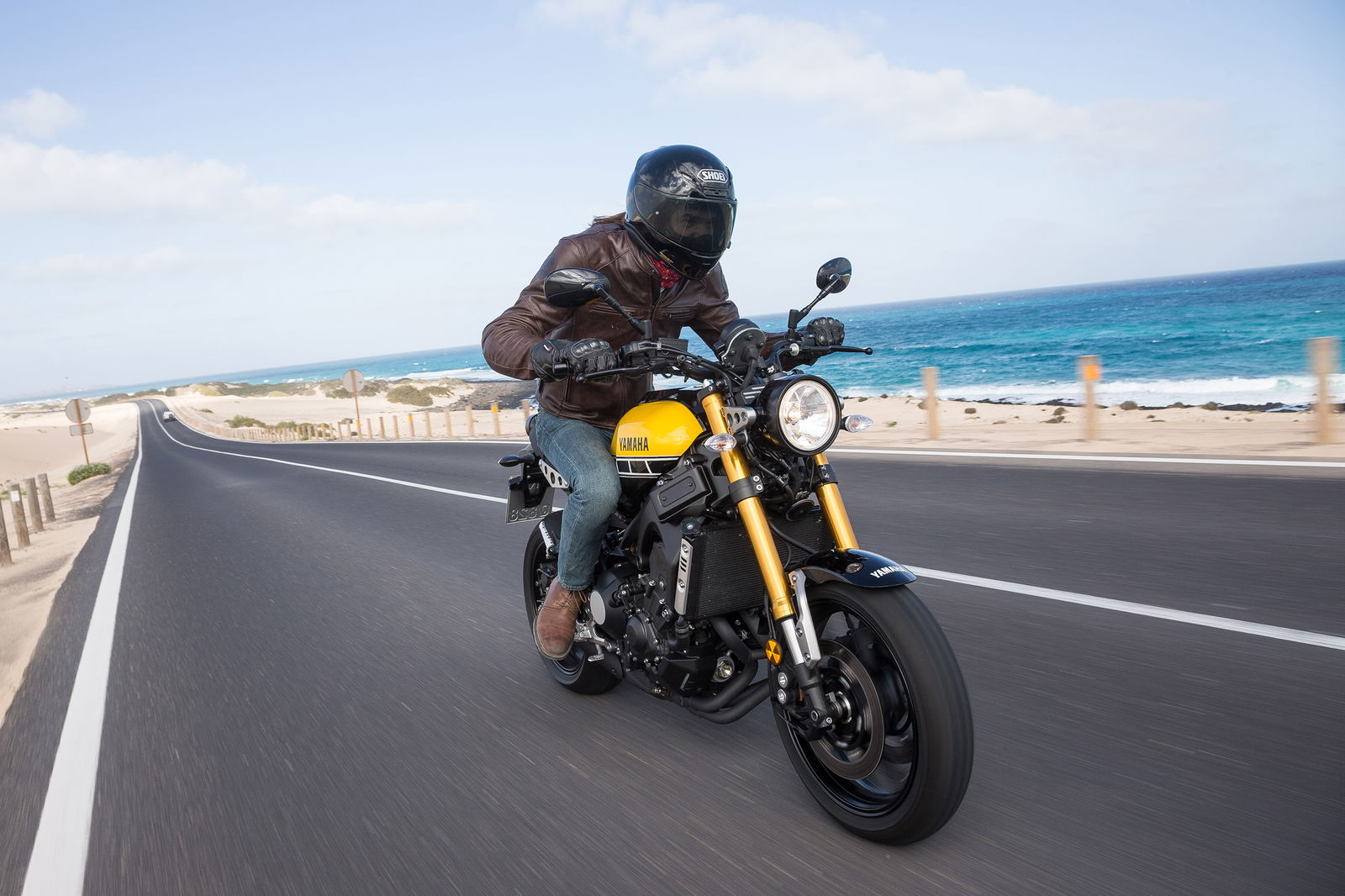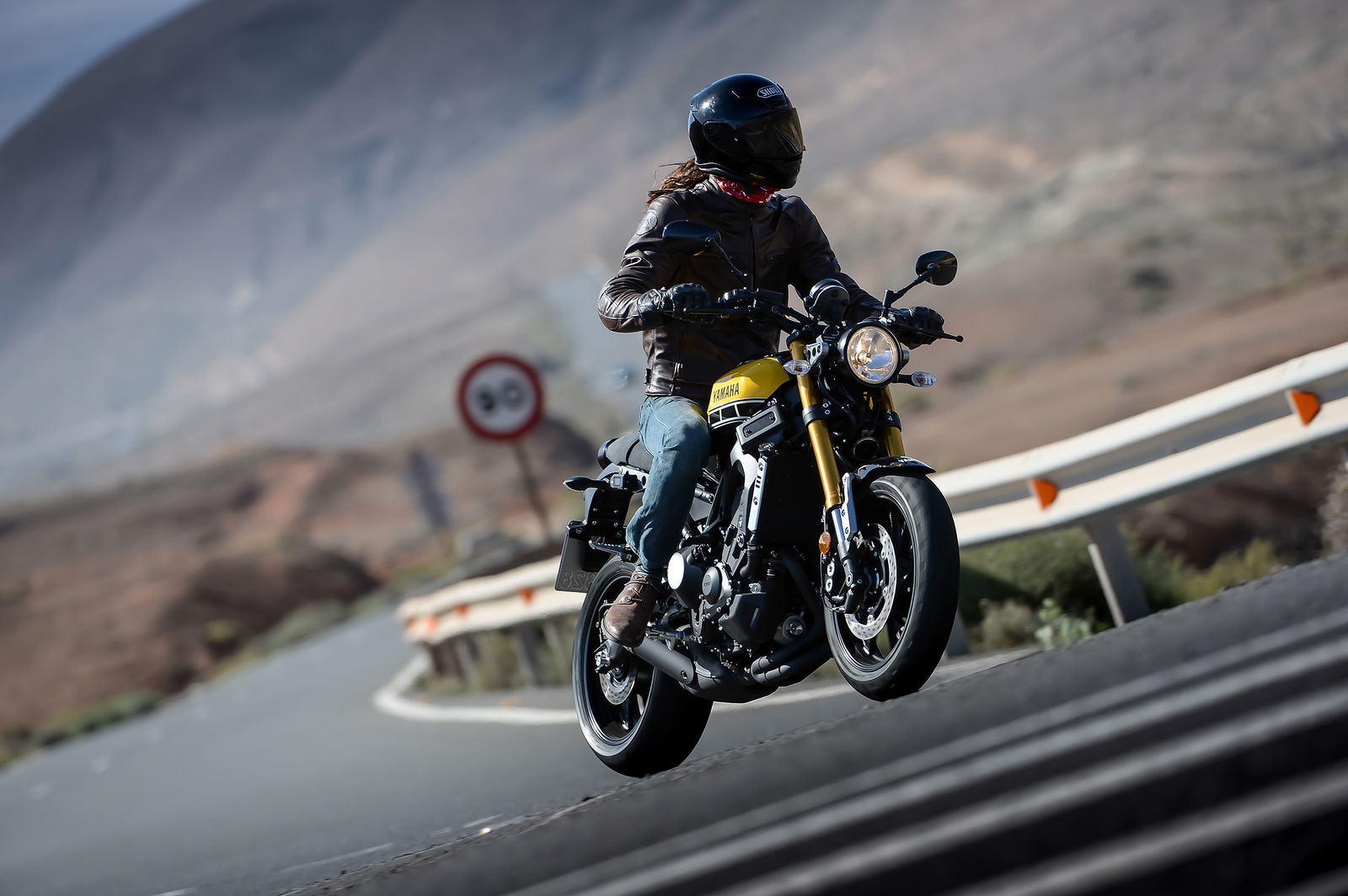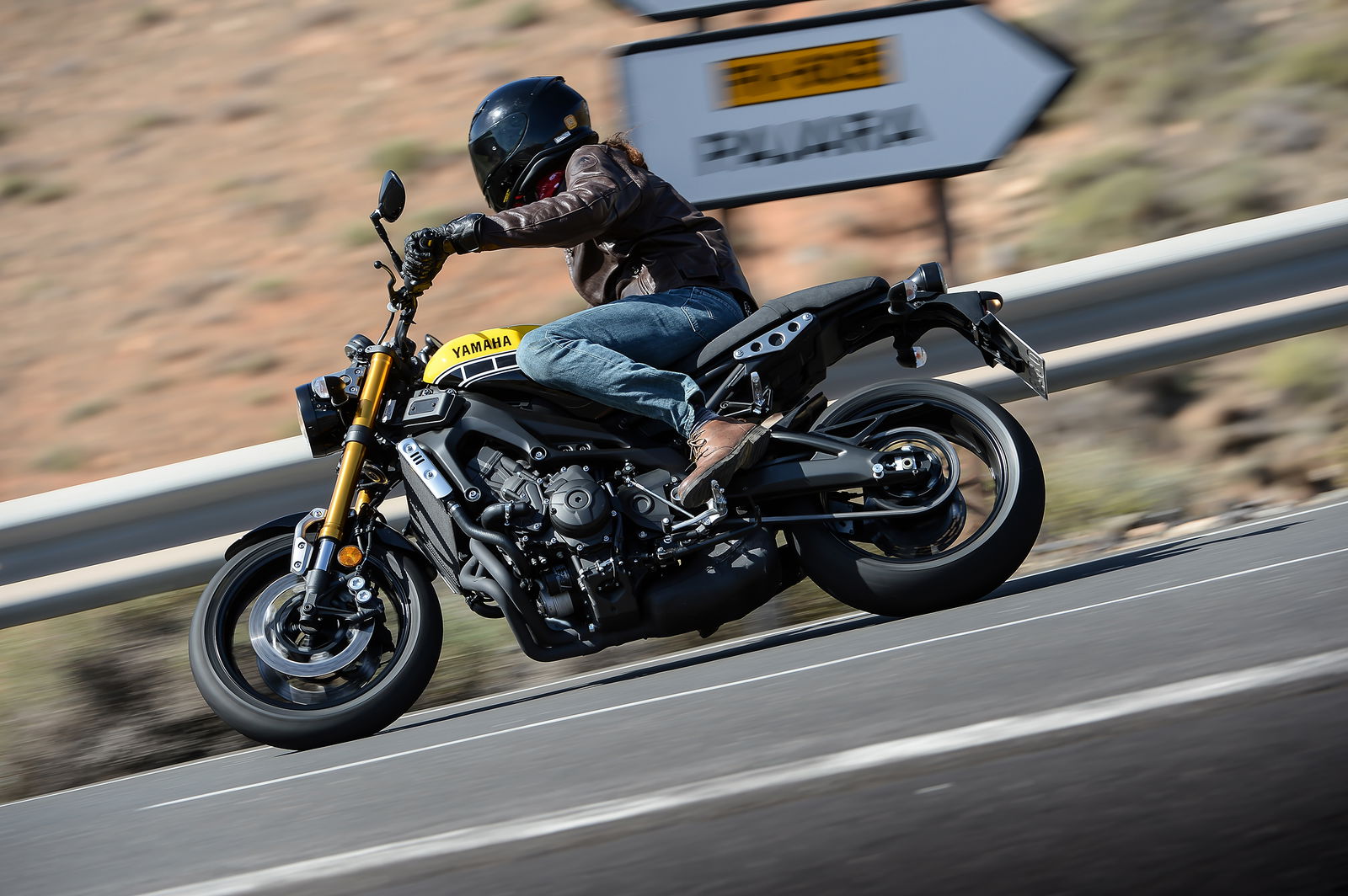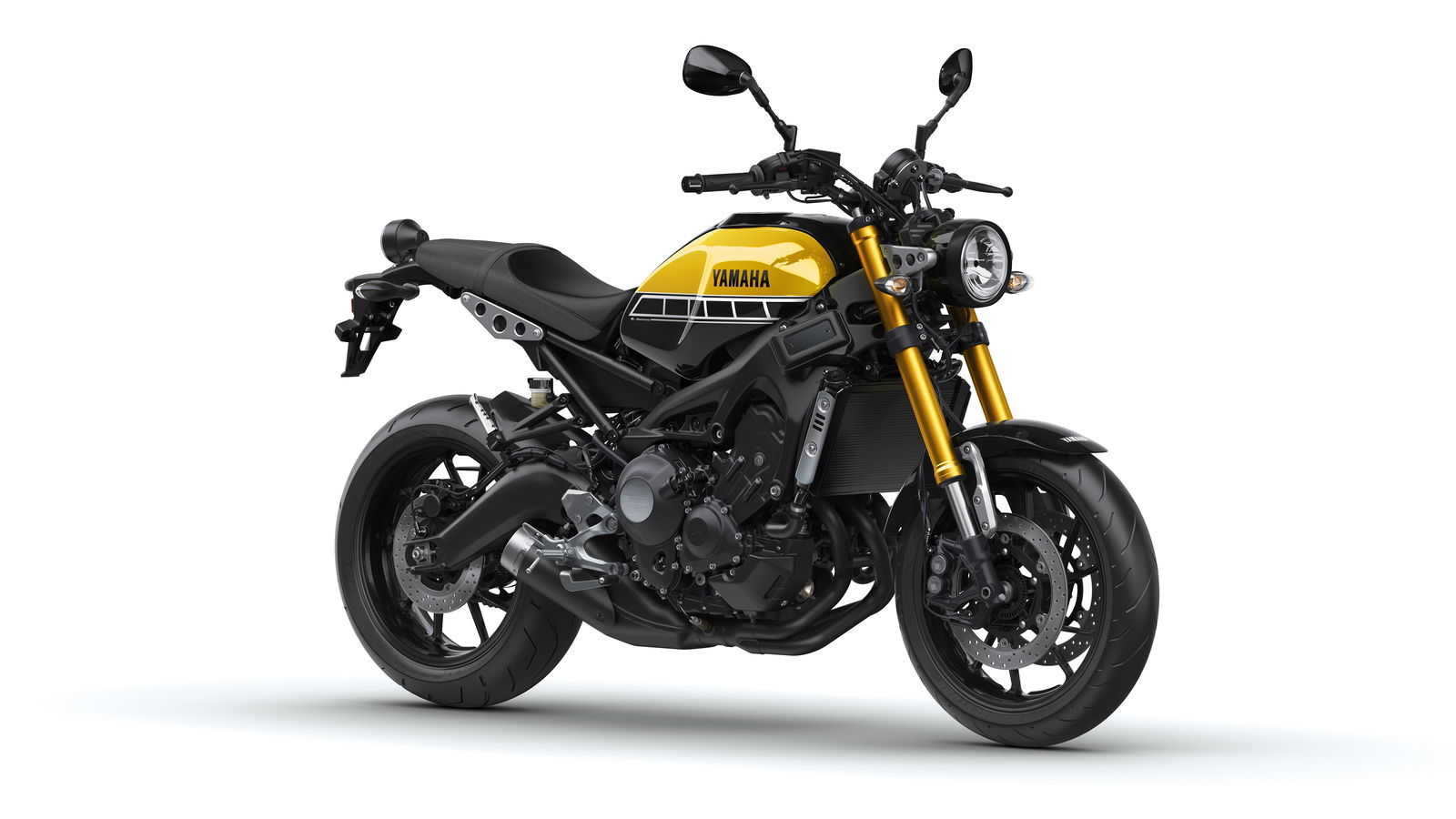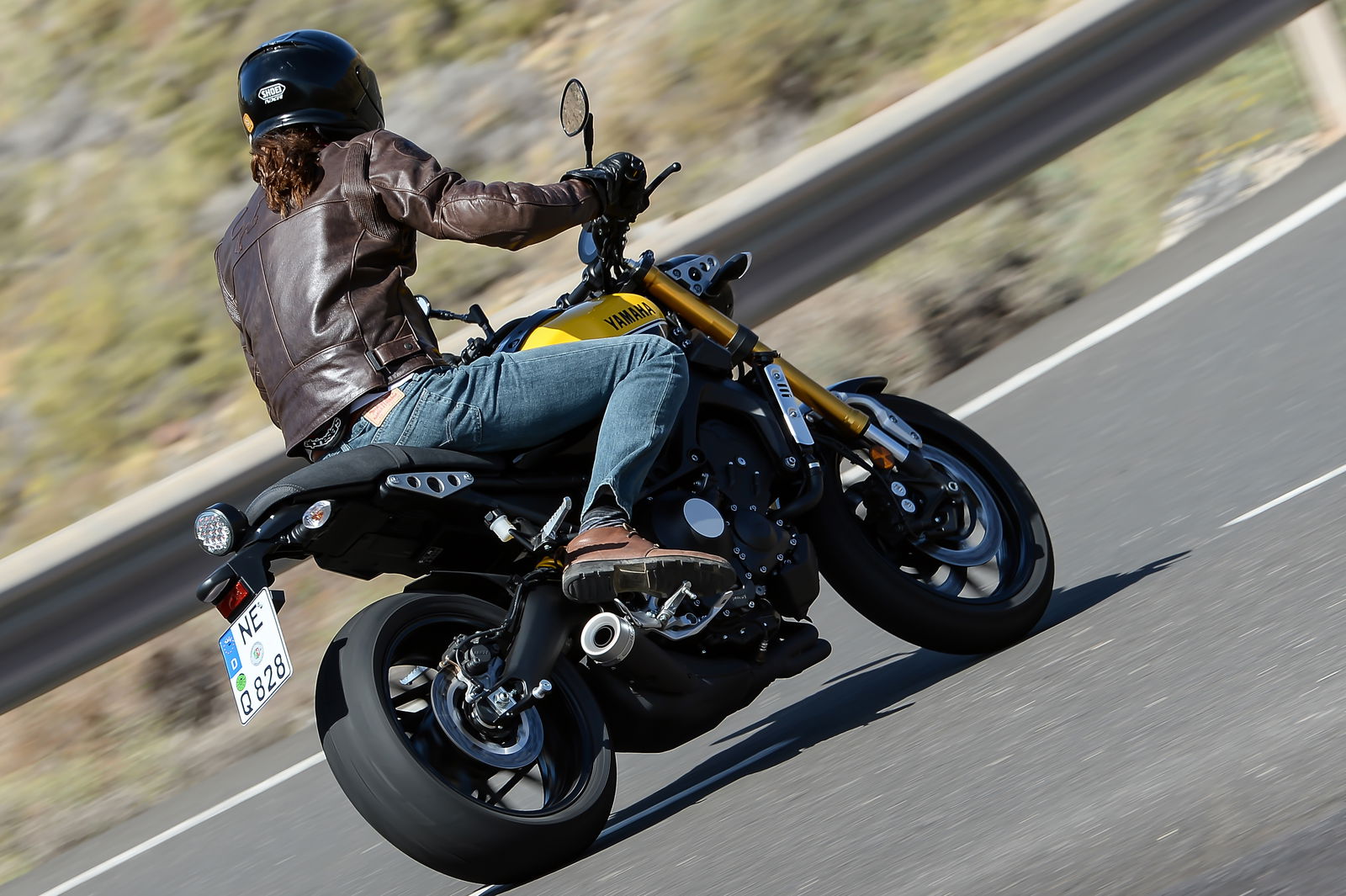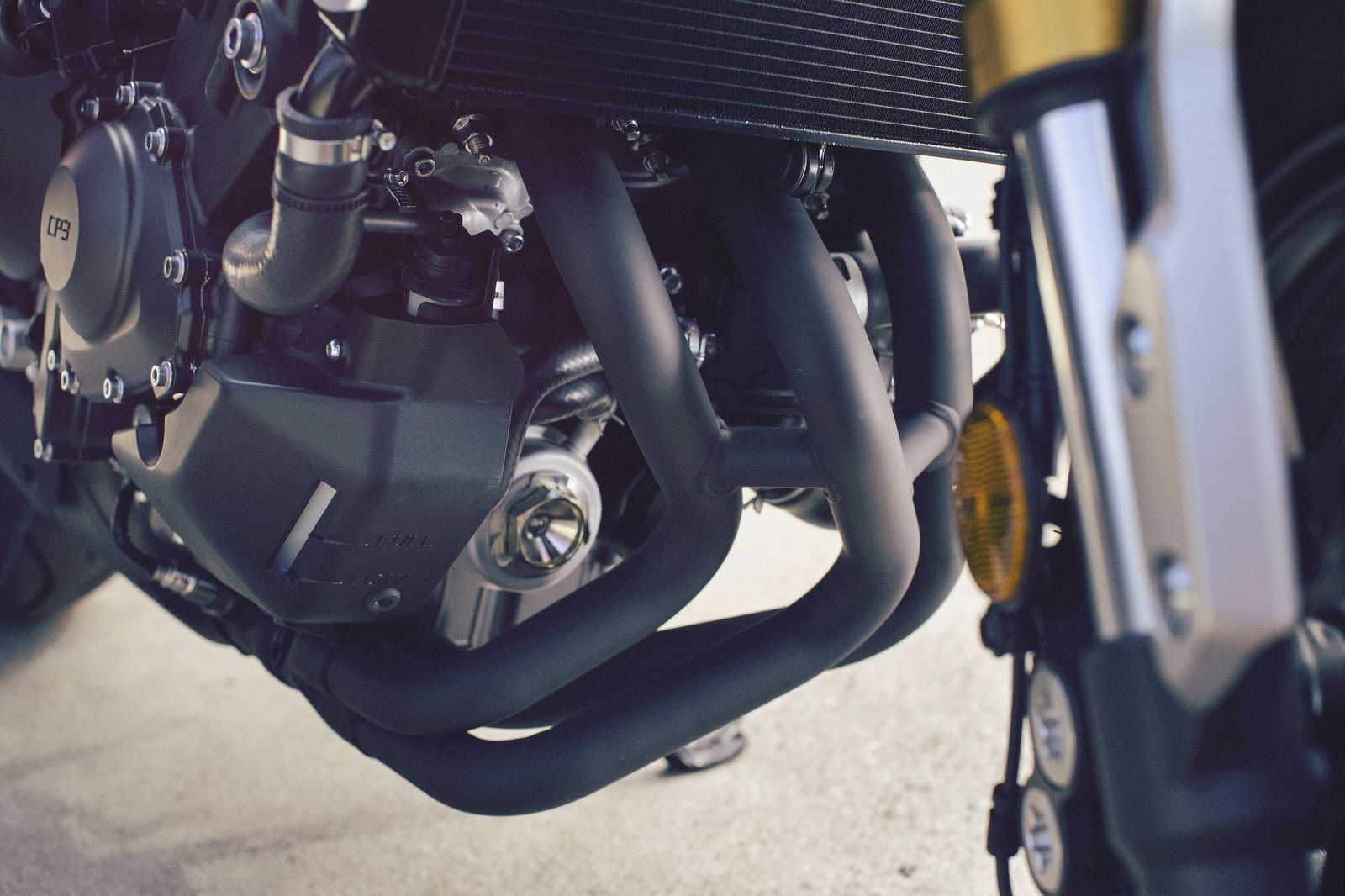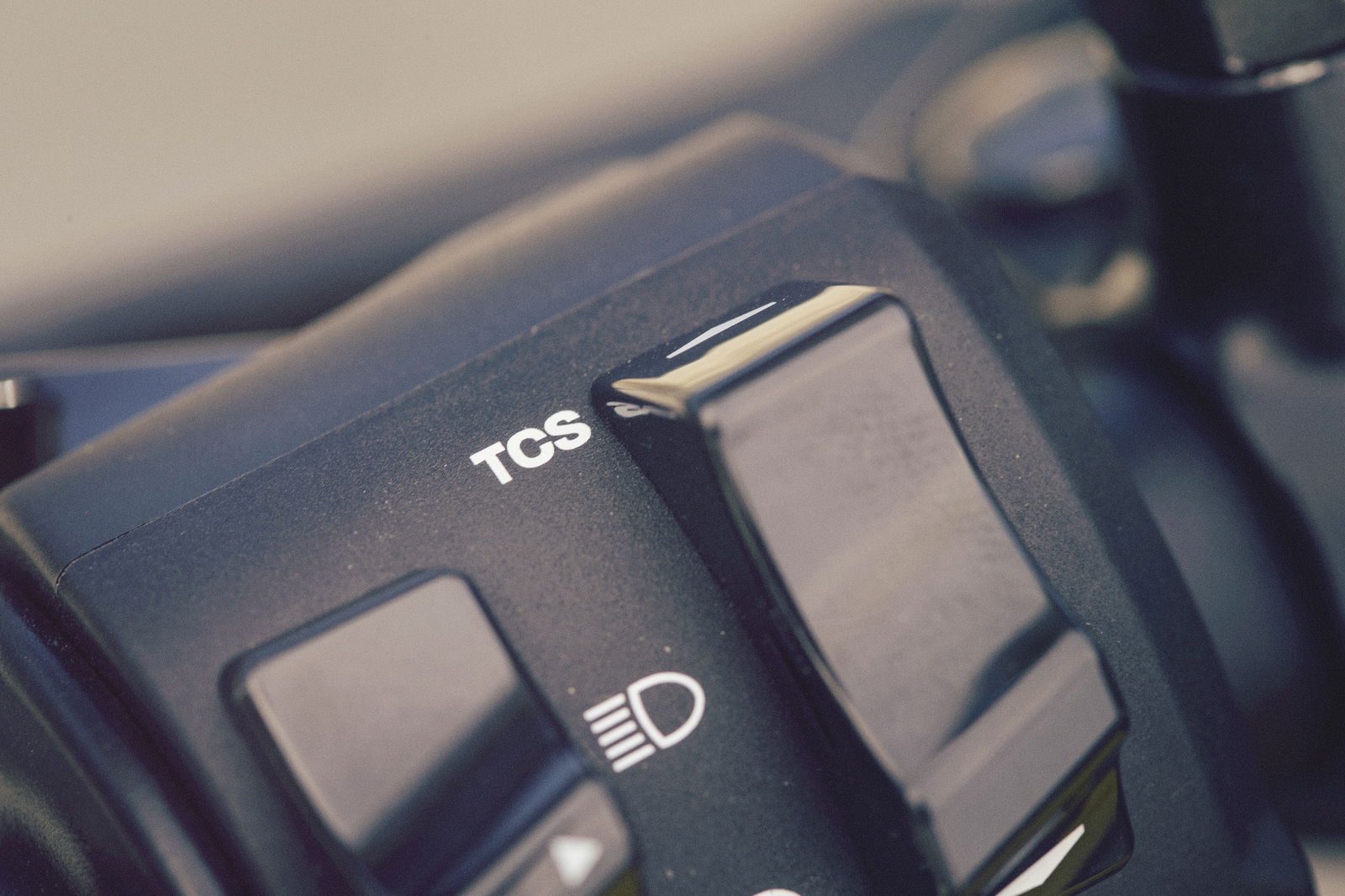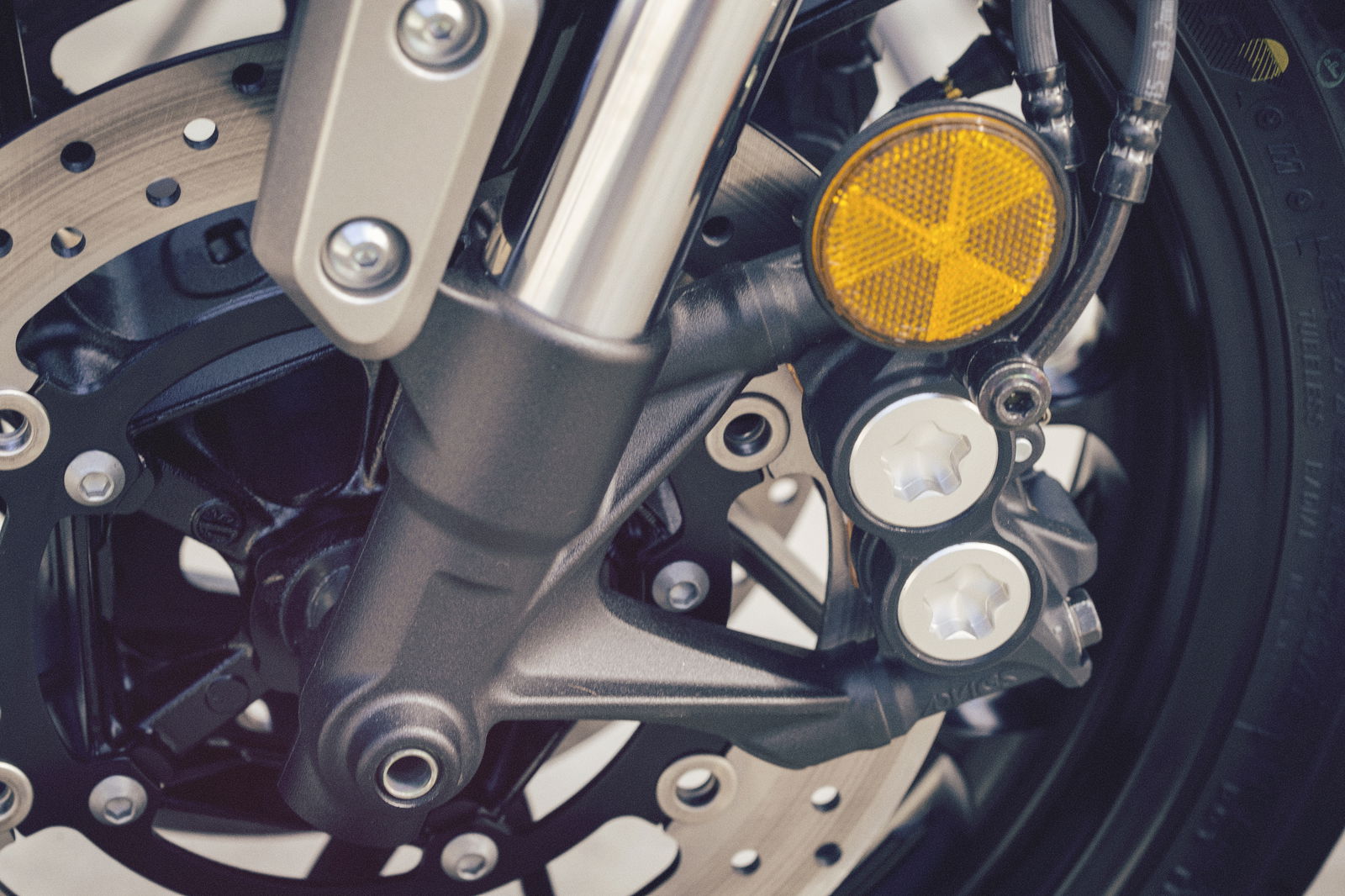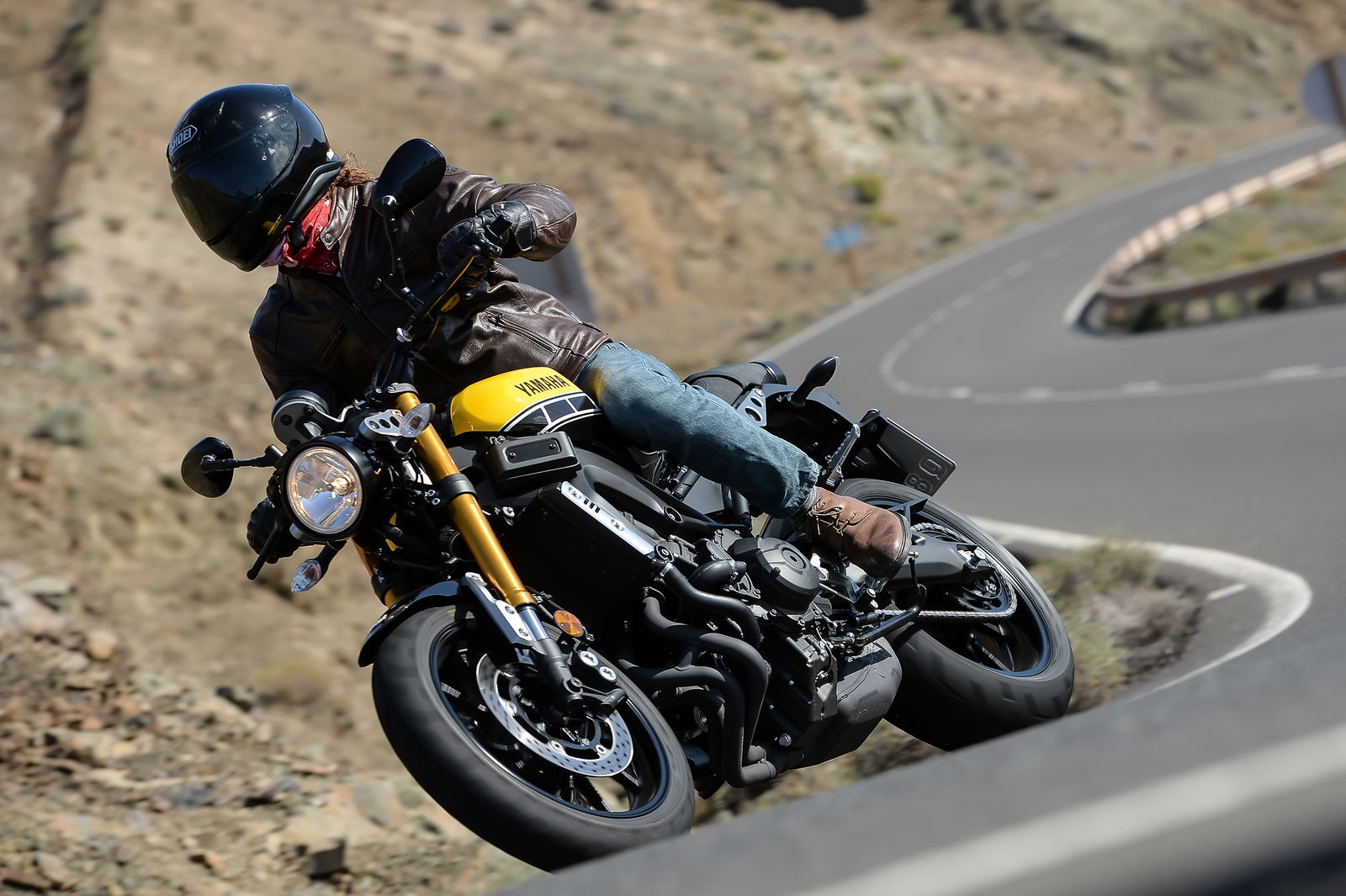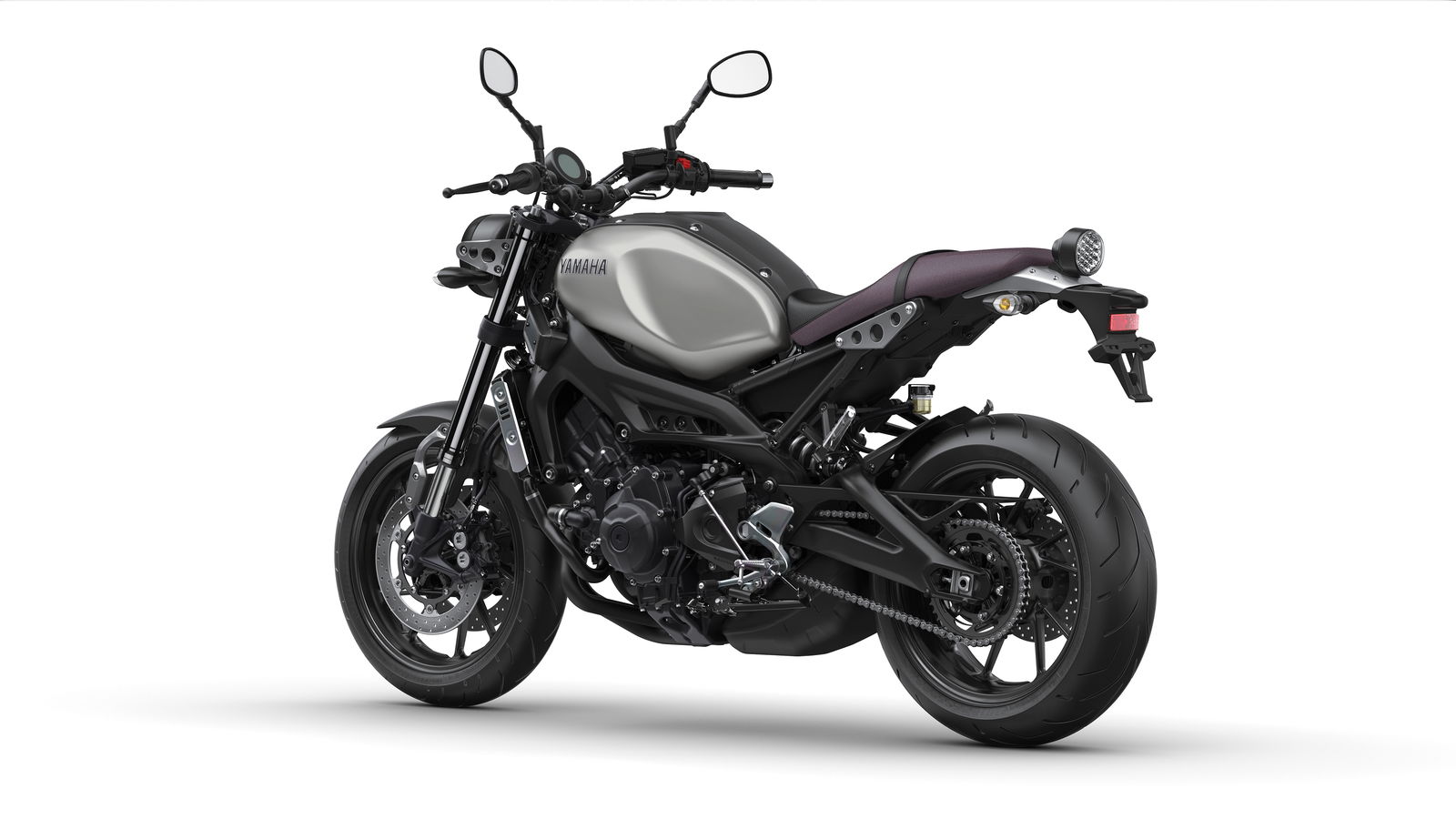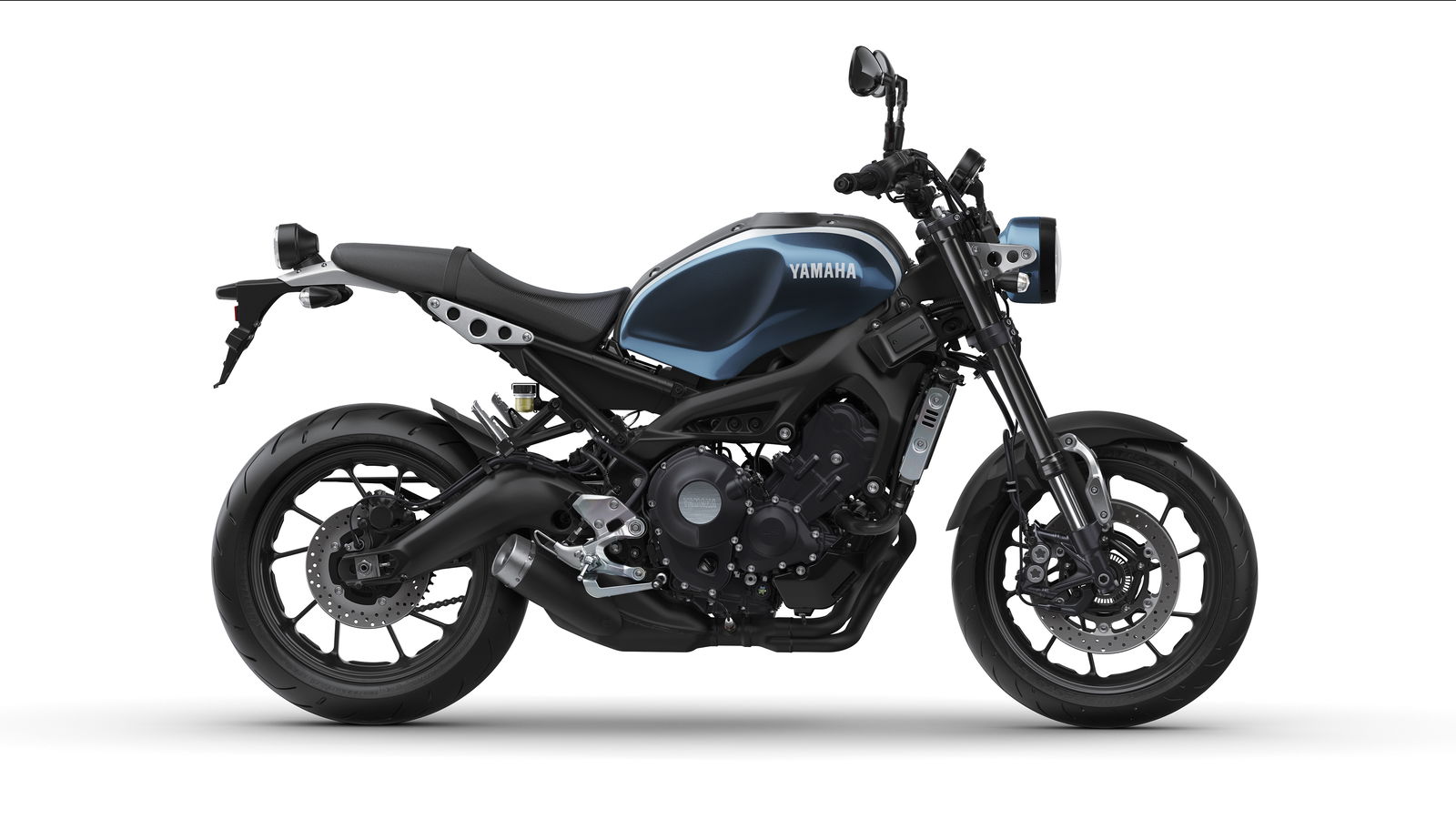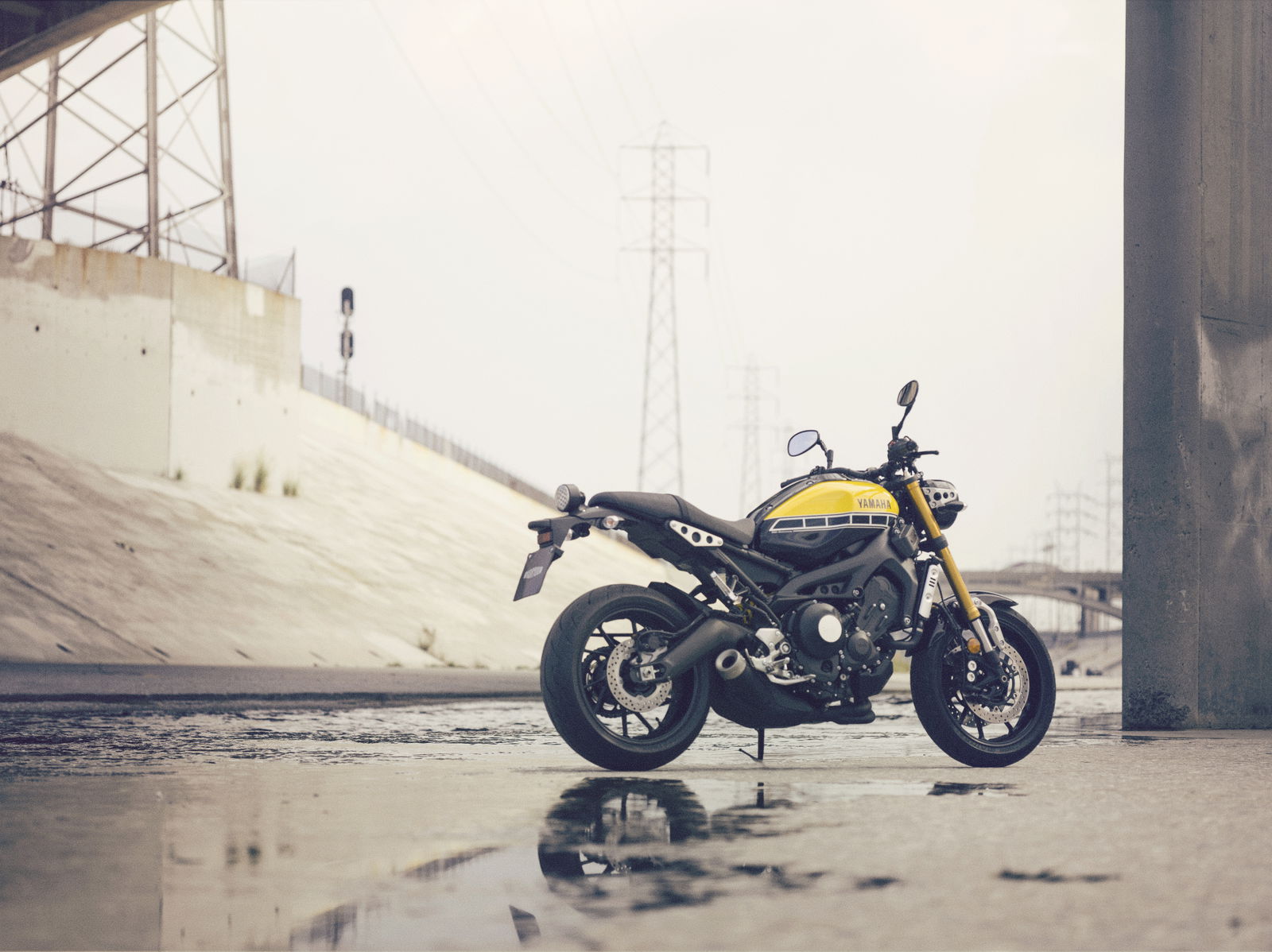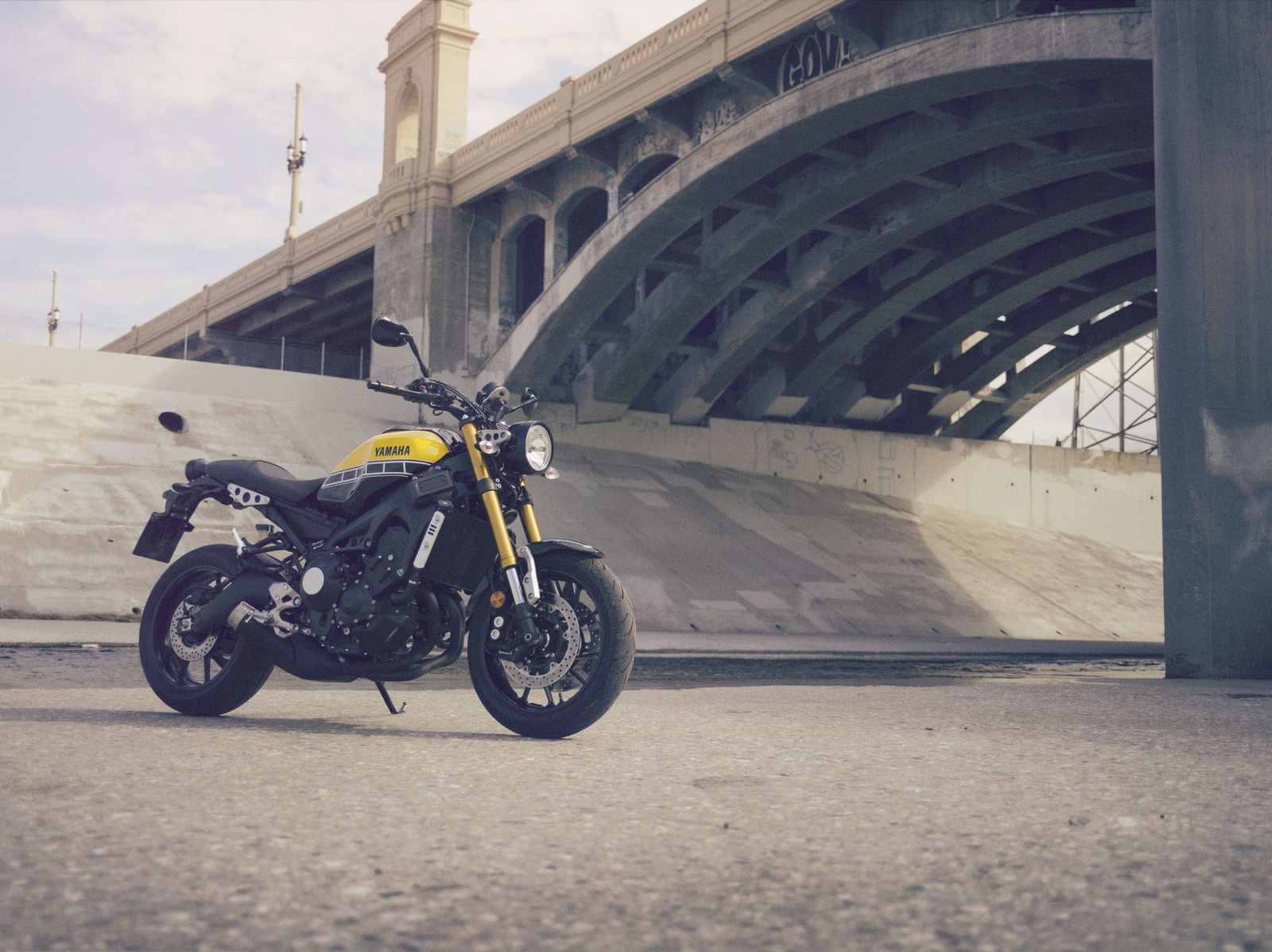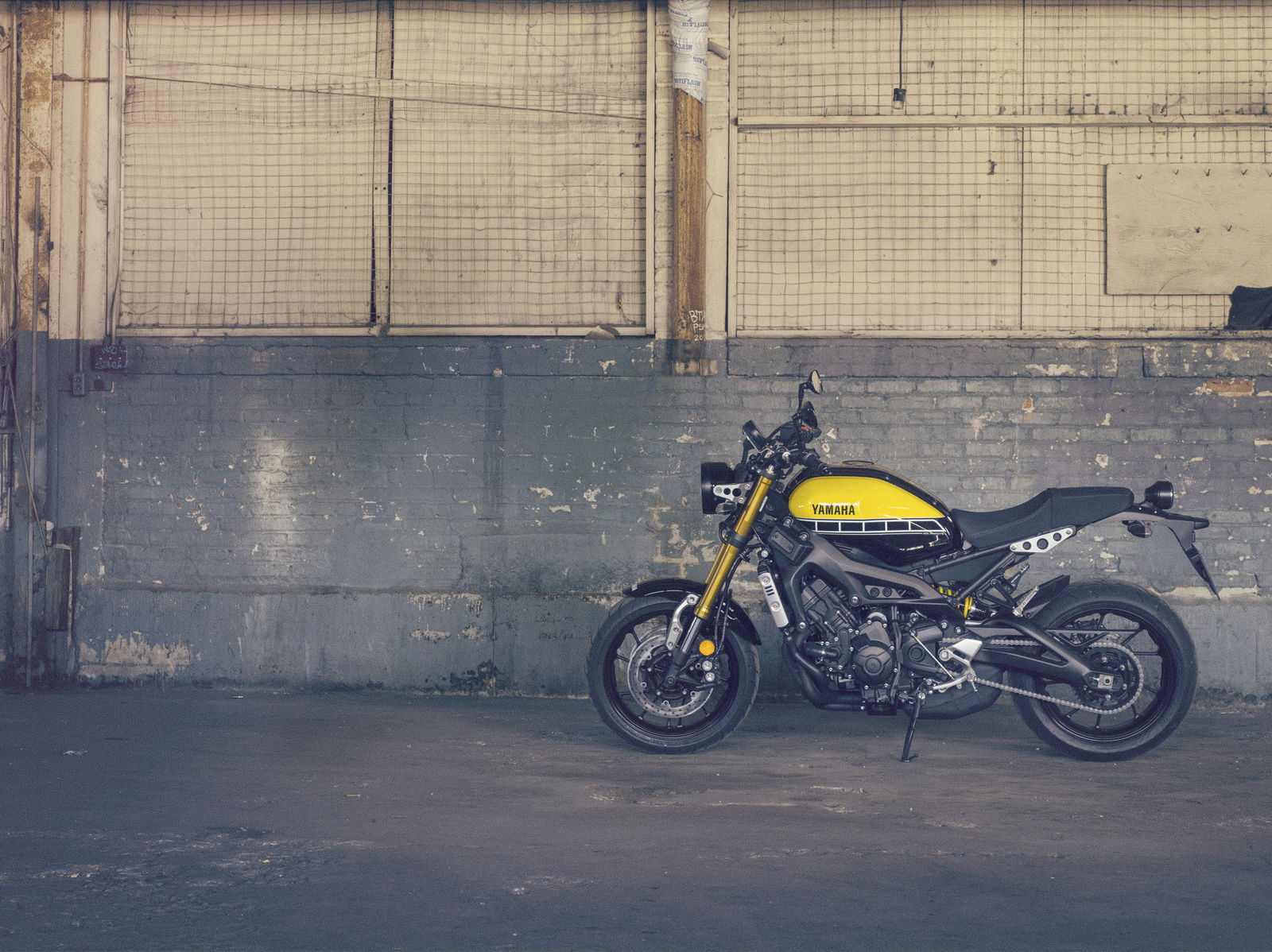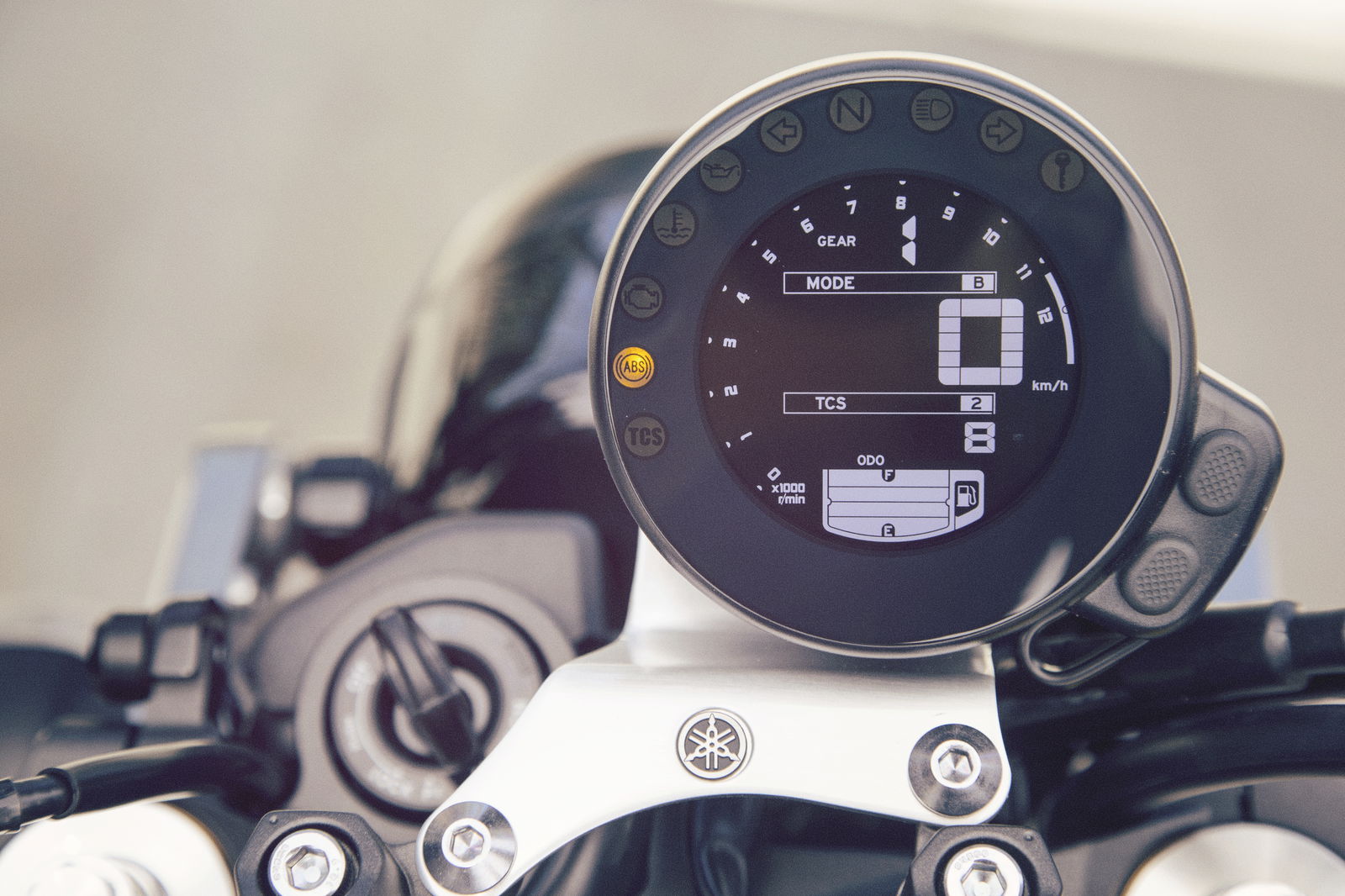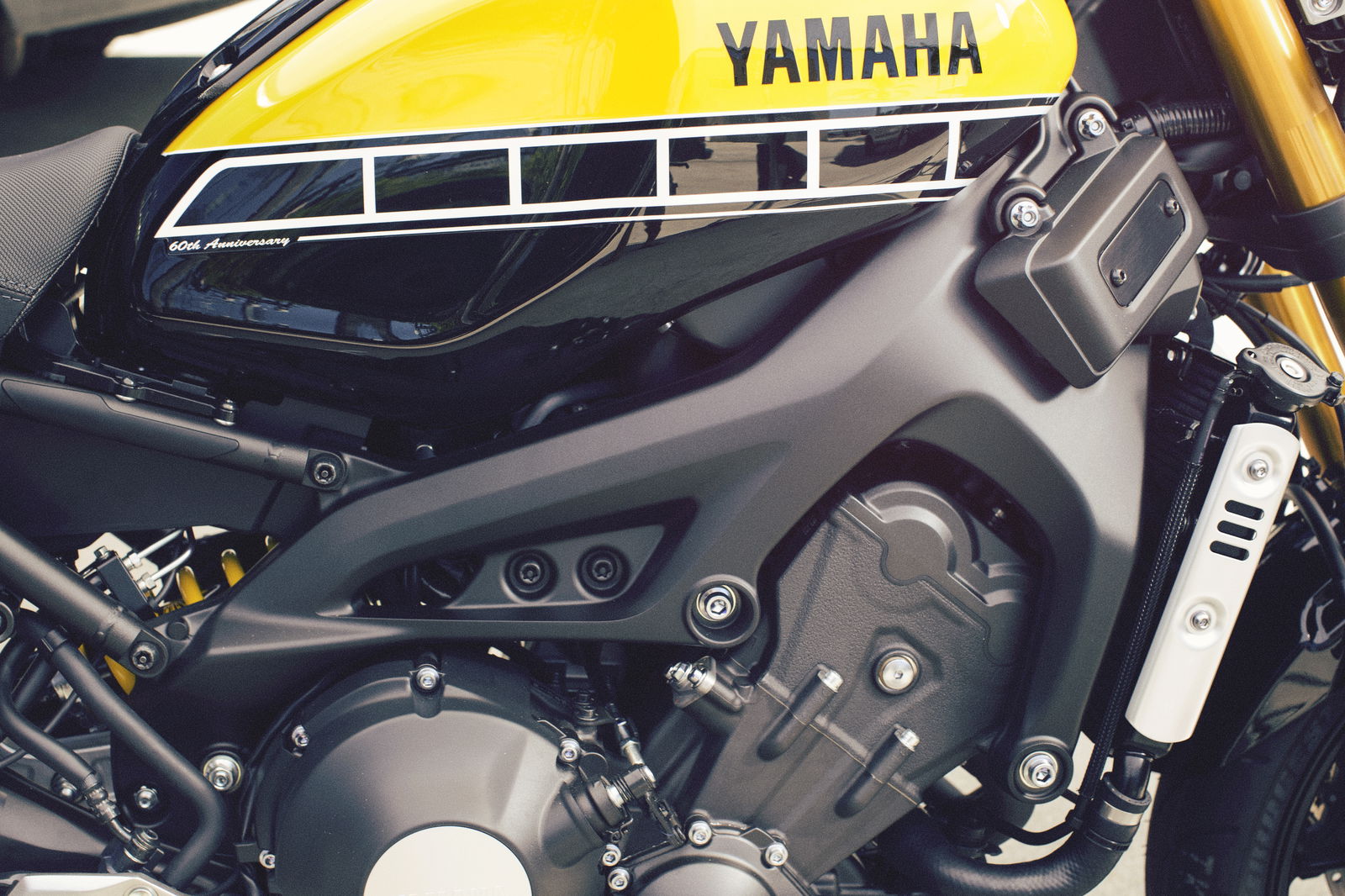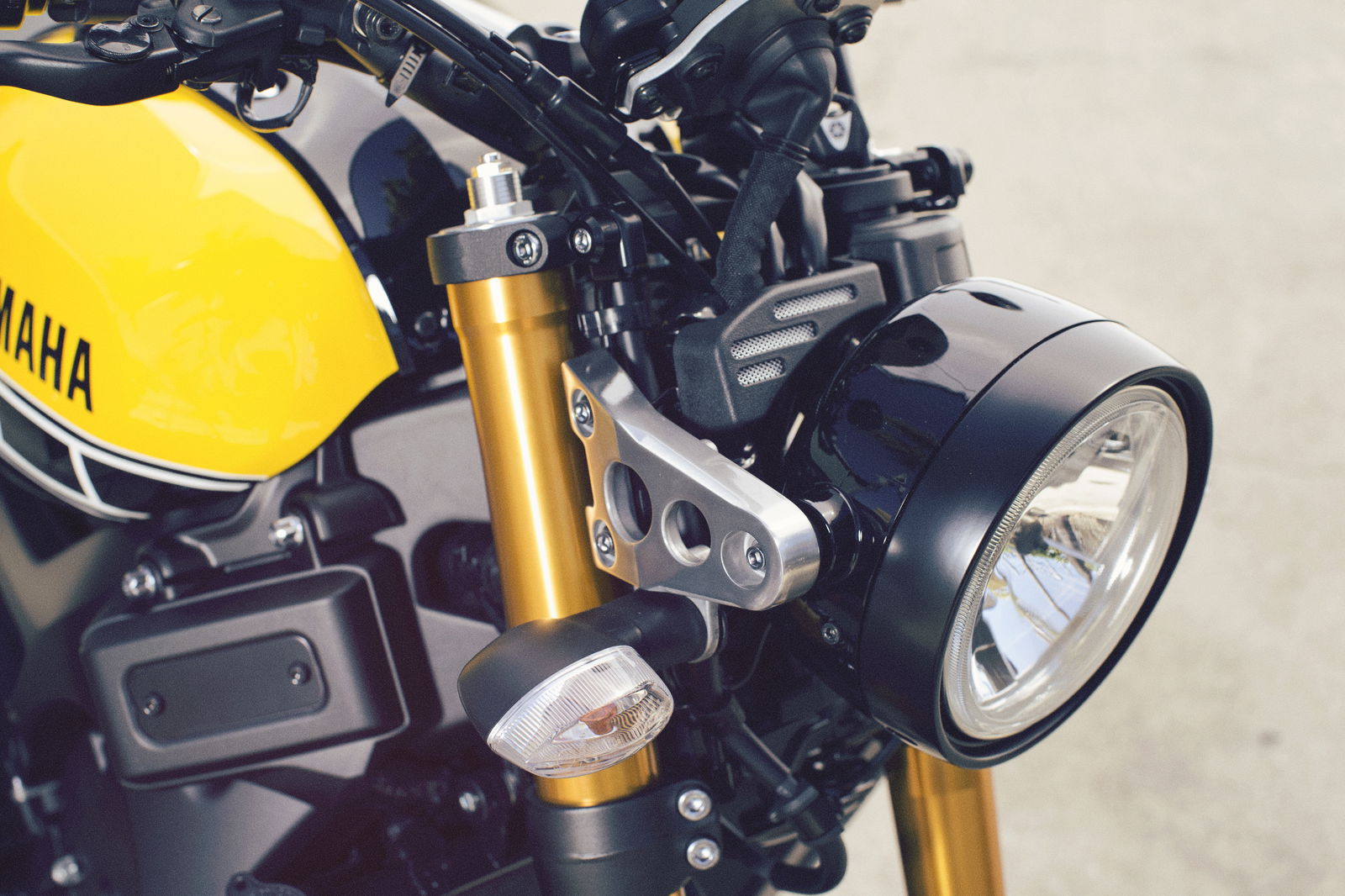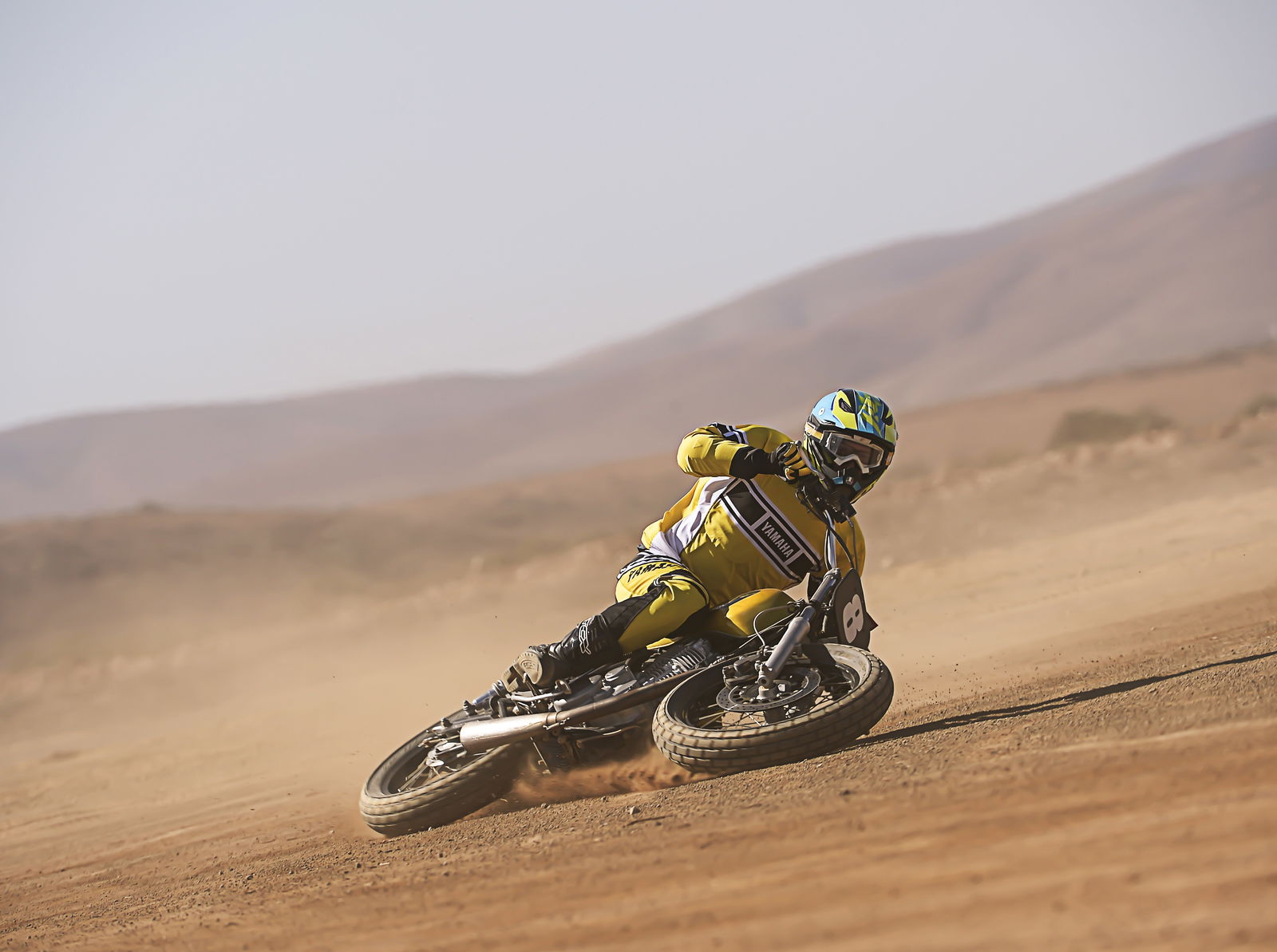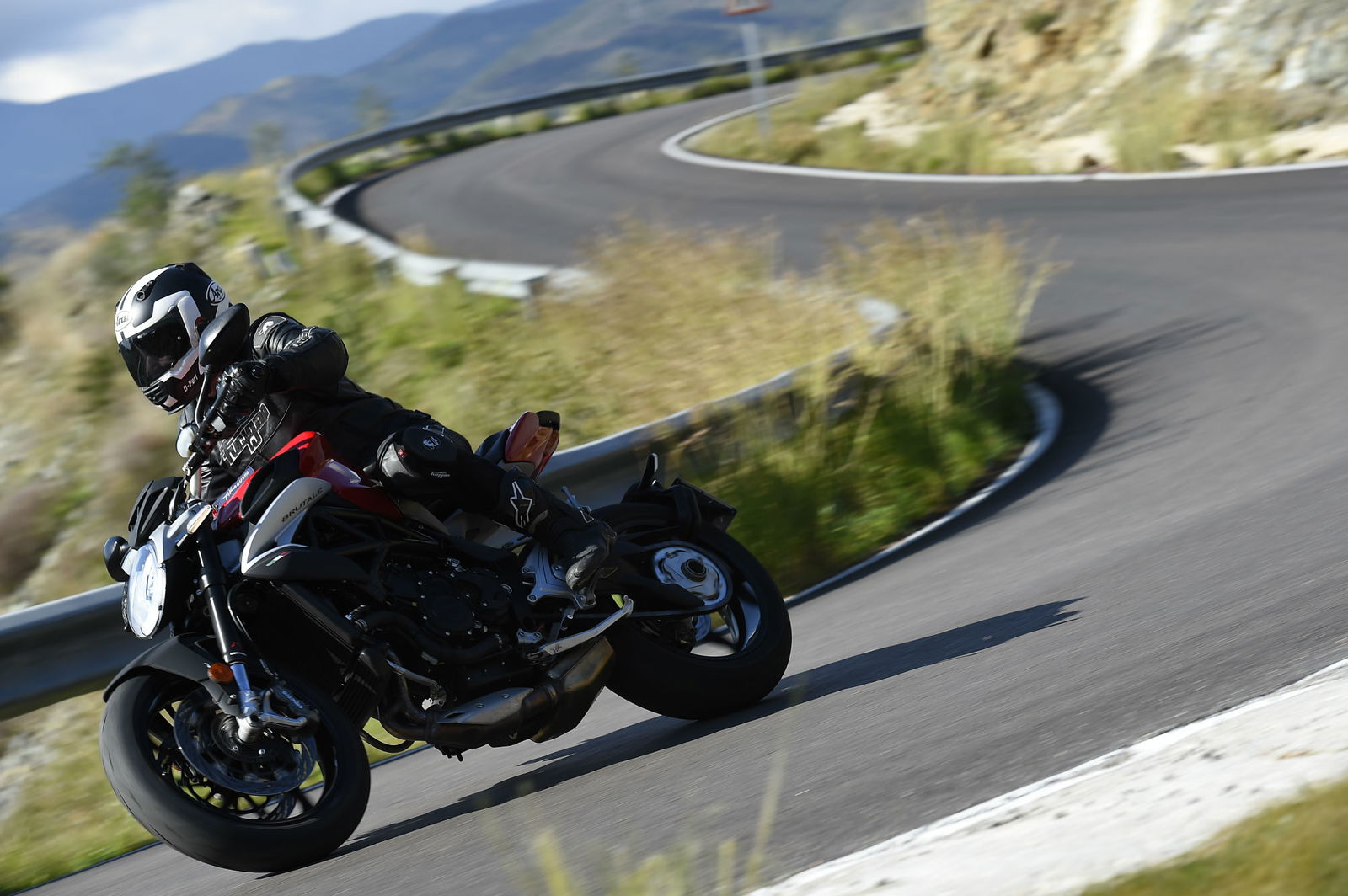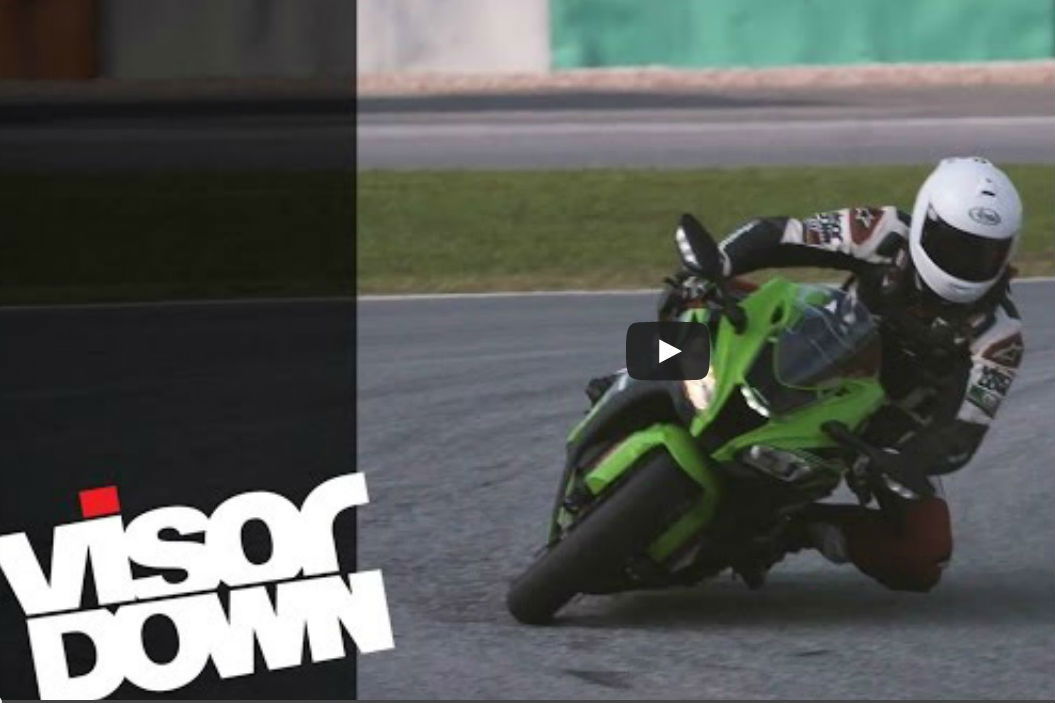First ride: Yamaha XSR900 review
Tom Rayner is in Fuerteventura to ride Yamaha's new XSR900
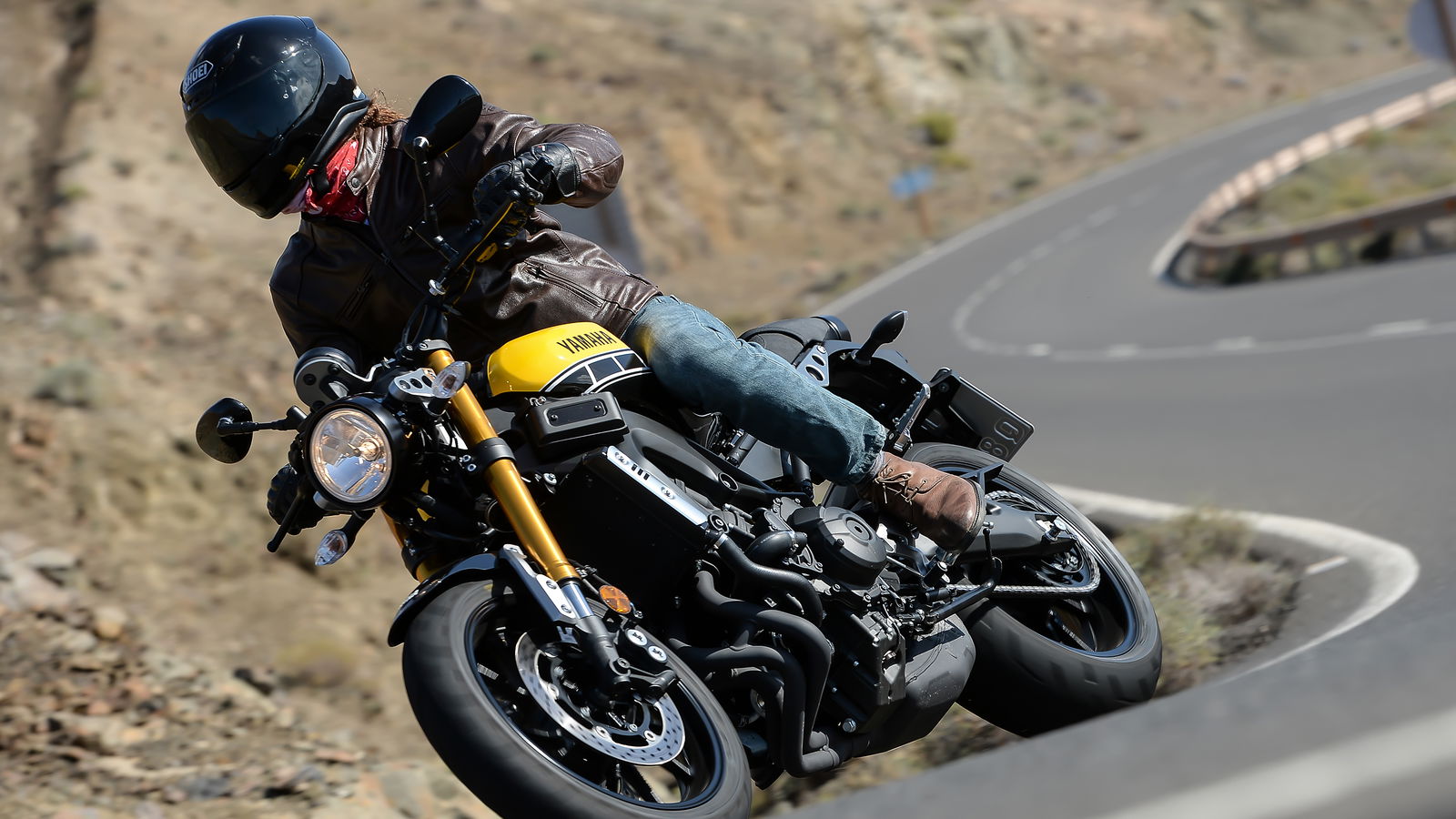
THE latest member in Yamaha's eclectic and rapidly multiplying range of Sports Heritage bikes is the XSR900. With its fashionable retro looks and the DNA of the hugely-successful MT-09 – what could possibly go wrong? Very little is the answer.
The smooth and twisting roads of Fuerteventura provided a great stage for the XSR900 to perform. The first word on my lips after a strong black coffee at the first rest stop was 'fun'. The three-cylinder engine loves to be revved and pulls hard all the way to 10,000rpm. Firing an XSR out of corners in second and third gear is going to surprise a lot of people and its mild appearance belies its performance. Retro or not, there's still 115hp on tap from this explosive in-line triple.
The MT-09 came in for criticism for a snatchy throttle response and thankfully the issue is now well and truly resolved. Of course, one man's 'snatchy' is another man's 'aggressive' and with this in mind the XSR's three riding modes should suit every style. There's 'A' mode, let's call it aggressive, 'B' mode which delivers power as smoothly as a twist-and-go scooter and finally 'Standard', which sits somewhere between the two.
MT-09 riders will feel instantly at home in the saddle of an XSR with both bikes sharing the same lightweight aluminium frame. The grips and pegs are also in the same position. Riders sit slightly higher and 5cm further back in the XSR's saddle so it's a better bet for taller people. The saddle is also wider and more comfortable so it's a better bet for everybody.
Traction control can be set to low, maximum, or turned off entirely – all with the flick of a switch on the handlebars and without the need to cut the engine. The assisted clutch is also lighter than the MT-09.
Fully-fuelled the 195kg XSR felt chunky and heavy with both feet on the ground at a standstill, but I was impressed with how nimble it became once the wheels were rolling. Even performing tight U-turns as we rode back and forth for the photos was easy, with the weight planted low and the wide bars making possible a shallow turning circle.
The suspension too is impressive for a sub £8,000 bike, with adjustment for rebound on the front and rebound and pre-load on the rear. The bike stayed in shape in all but the most extreme circumstances and the radial mounted twin discs at the front are up there with the best in this class and price bracket.
The combination of a smooth engine, a comfortable riding position and sophisticated electronics inspires a lot of confidence to ride faster. Intermediate riders will improve in leaps and bounds on an XSR and quicker riders will enjoy taking the machine to the edge of its considerable capabilities. Novices might prefer the softer XSR700, but the power delivery is more than smooth enough on the bigger brother for right wrists still learning their limits.
There's so much torque on offer that even if you're in a gear too high on the exit of a corner it quickly picks up. Despite complying to increasingly strict Euro emissions regulations the XSR produces a decent noise from its standard cans. It's never loud but the three cylinders howl towards the redline and I'm looking forward to seeing and hearing some aftermarket exhausts.
Riding on the featureless volcanic rock of Fuerteventura feels a bit like riding on Mars at times, but I bet there are more petrol stations on Mars. My menacing reserve warning counted up to 25 miles before I finally found fuel. The tank was dry after 123 miles. A steady throttle and fewer volcanoes to climb will certainly return a better figure but I'd be surprised if many owners achieve the 56mpg and 168-mile range Yamaha promises from the 14-litre tank. Mid-40s is a more realistic figure.
We're living through an age in which motorcycles can be classified as 'neo-retro'. What this means in reality is a modern lightweight frame, a modern lightweight engine, modern electronics and rider aids, a round headlamp and the shameless appropriation of former glories - in this instance the XS750 from the mid '70s.
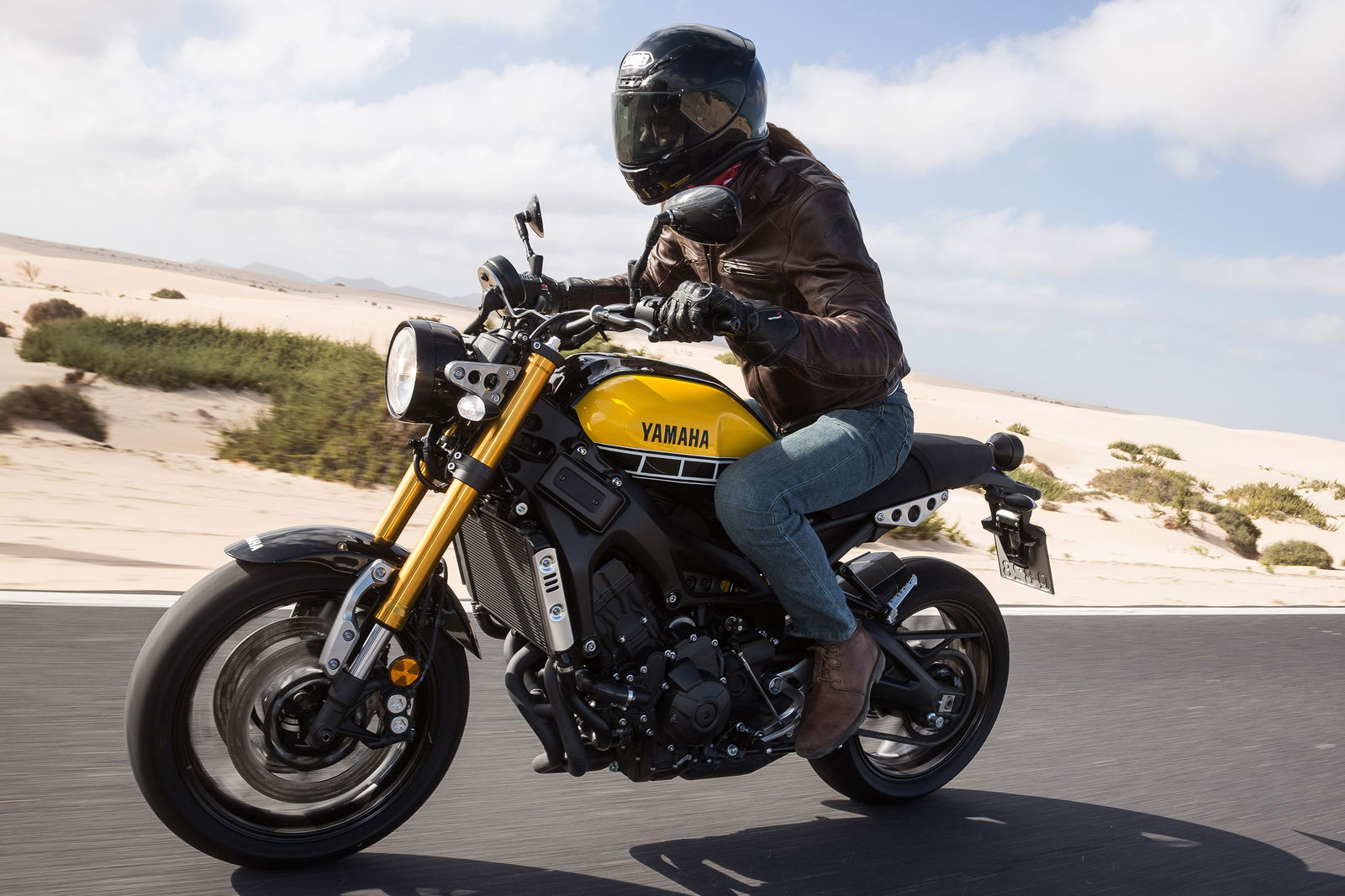
Looks-wise the XSR is remarkably restrained. It's an MT-09 in granddad's cardigan. Even in its 60th anniversary yellow Speed Block paint this 115hp naked looks understated. Yamaha calls it 'a wolf in sheep's clothing' but it serves another purpose according to Shun Miyazawa (Yamaha Europe's product manager and the Godfather of firm's 'Sports Heritage' movement). He reckons the XSR was designed to hoodwink wives and girlfriends into thinking their partner wants to buy a sensible machine and will give green light the purchase. Maybe some wives might want to hoodwink their husbands, Shun!
But it's true, the heritage looks do promote a softer style in the saddle. If you're feeling lazy and laid back it looks much better bimbling along a back lane at 50mph on an XSR than an R1. 'Psychologically there's less pressure to be aggressive and show off,' Shun explained.
The XSR has been accused of looking messy but Shun Miyazawa says he 'proudly accepts' the criticism. 'It's easy to build a super neutral motorcycle, not provoking anybody,' Shun said. 'It can be accepted by everybody but it can be loved by nobody.' He reckons Yamaha works on a 20% love it, 20% hate it and 60% neutral ratio.
That radiator on the front looks as hideous as it did on the XSR700 but perhaps this is the price you pay if you want modern performance. Besides, if you don't like it as standard, customise it – isn't that message? Yamaha has given up subtly spoon feeding us the 'yard-built' custom scene. Now it's a high-pressure hose down the throat. Faster Sons, the uniform of Yamaha's propaganda division, is emblazoned on every t-shirt and snapback baseball cap worn by Yamaha Europe at the launch. Its message is clear; the cool kids are custom kids.
I remember 15 years ago when customising a bike meant sticking some misaligned rim tape and a 'Rossi 46' tank pad on an R6. Times have changed. Apparently now every biker needs a conceptual mood board next to their box of Snap-Ons. To be honest, if I'd wanted to sit around stroking my beard, sipping skinny fraps and pondering the merits of 50 shades of beige on a Pantone colour chart then I'd have jacked in biking years ago, bought a beret and joined a London design agency.
No serious custom builder is ever going to get excited about a modern XSR. Even the designers from Copenhagen custom house Wrenchmonkees, who were flown to the event by Yamaha, weren't exactly earning their corn. They looked about as enthusiastic about their half-finished XSR900 project as the actors in some depressing Danish noir TV drama.
Instead, what Yamaha has created with the XSRs is yard building-by-numbers. It's custom-lite for people who don't know how to do the difficult stuff with looms and blow torches. For example, the tank can be removed by unscrewing just ten bolts, and there's no pump or wiring to disconnect. Even the least experienced mechanics will get to feel something of the thrills of spannering, particularly with an ever-expanding catalogue of bolt-on accessories and custom parts.
A popular concept among custom bike builders is flat-trackers. Even Ducati built a flat-track inspired Scrambler. Of course, Yamaha is no exception to the trend.
In addition to riding the XSR, Yamaha promised a special activity for journalists, which turned out to be flat-tracking on SR400s at a purpose-built oval in the middle of the desert. With ABS and traction control making the XSR900 so safe, Yamaha has to find devilish new ways to terrify the press. There were more bloodied knees than a school playground but I stayed out of the ambulance. I was less On Any Sunday and more Tea with the Vicar after Church On Sunday.
Yamaha has rapidly populated its Sports Heritage range and there are singles, twins, triples, V4s and air-cooled and liquid-cooled machines all vying for your attention. No European manufacturer can offer so much diversity. In fact there's more choice than offered by Triumph, BMW and Ducati combined. Of course, with diversity comes dilution but for now it feels like there's cohesion in this eclectic stable.
At £7,849 the XSR costs just £500 more than an MT-09. I reckon it's worth the extra cash. Plastic parts have been replaced by metal and the electronics are in a league above. Personally I prefer the XSR's style and they are unlikely to be as common in the bike parks at the next meeting you attend.
It comes in three colours but if you want the yellow Speed Block it's another £150. The golden forks might help soften the blow. Also on the menu is a brushed silver option and a blue/slate grey bike.
There's a lot of motorbike for your money here. The economies of scale and sharing components has allowed Yamaha to build a machine that's close to perfect for 99% of the riders 99% of the time. Those looking to do track days or touring should probably look elsewhere, but for the rest of us it's time to reap the rewards.
Now, where's my mood board?
CLICK HERE TO WATCH OUR VIDEO REVIEW OF THE YAMAHA XSR900
Model tested: Yamaha XSR900
Price: £7,849 (£150 extra for Speed Block paint)
Engine: 850cc triple
Power: 115hp at 10,000rpm
Torque: 87.5Nm at 8,5000rpm
Wet weight (inc fuel and oil): 195kg
Frame: Aluminium diamond, die-cast
Brakes: Radial mounted, 298mm twin discs at the front and 245mm single-disc rear
Seat height: 830mm
Fuel capacity: 14 litres
Colours: Yellow speed blocks/brushed silver/rock grey
